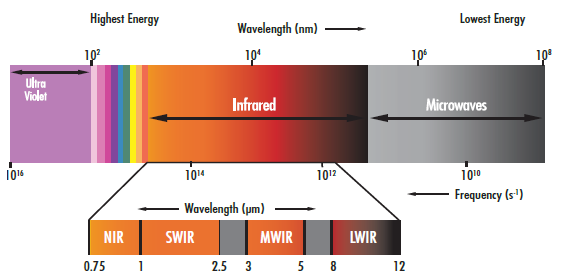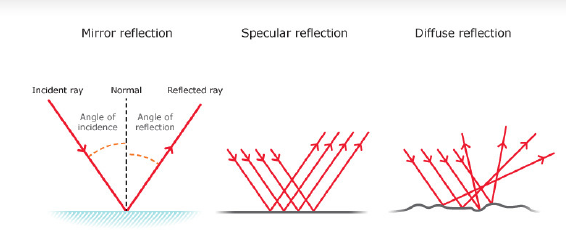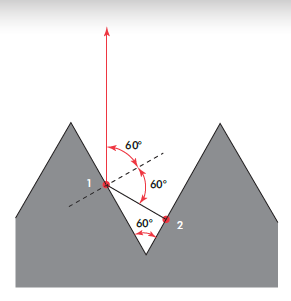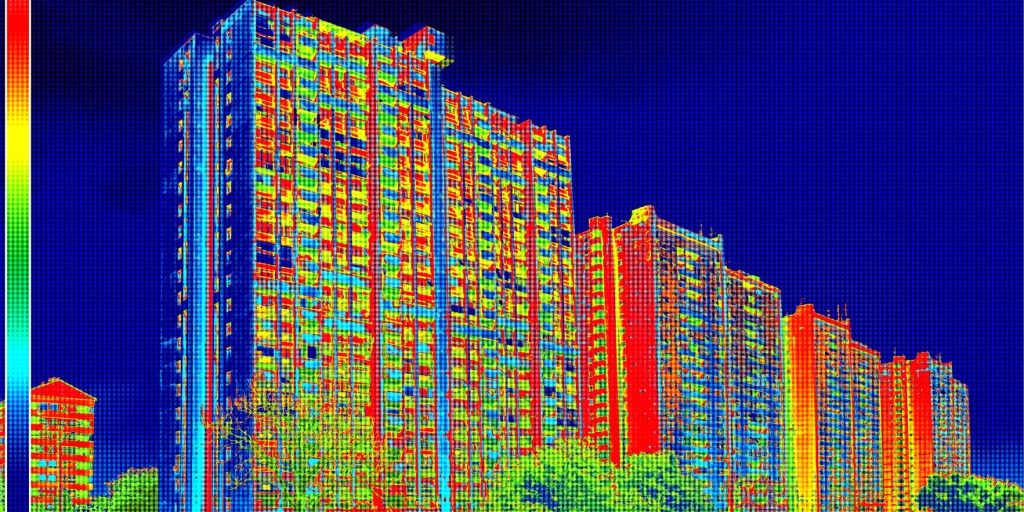SUMMARY
This article investigates the physics principles that govern the effects of type, smoothness, and surface structure of materials on a material’s emissivity. A simple classification of materials is metals and nonmetals. Nonmetals tend to have higher emissivity above 0.8, while metals generally have low emissivity below 0.2.
Other factors that affect the emissivity of materials include smoothness or roughness of the surface, irregular surface structures, and regular surface structures. Irregular surface structures of materials produce varying emissivity, depending on the smoothness or roughness of the surface. This results in different emissivity of the same surface. Regular geometries, such as grooves, show an enhancement in the emissivity of an object [1].
This study proposes using regular geometries with varying parameters to produce desired results. The findings can help develop the framework for a possible software solution that could help in designing materials with regular geometries that produce a desired material’s emissivity. Follow-on experiments will verify the software’s validity. The software would provide the researcher a tool in developing materials with regular surface geometries that produce a desired increase or decrease its emissivity.
INTRODUCTION
Infrared (IR) imagery is a good tool for intelligence, reconnaissance, and surveillance of potential targets. IR signature management provides the means to develop methods, which can alter the IR signatures of objects for various purposes. Some factors affecting the signature of objects in a real environment include the wavelength of the incident radiation, the size of the object, polarization of light, and atmospheric phenomena [2]. Other factors that affect the signature of the object include irregular and regular surface structures [1].
This article focuses on the role of irregular and regular surface structures in IR signature management. Understanding the physics behind the interactions between irregular and regular structures on the emissivity of materials provides the ability to design structures on materials that would produce the desired IR signature responses. Understanding the principles that affect the emissivity of materials through manipulating their surface structures could also provide the framework for a software solution. This would guide the researcher in the material’s surface structure design that would produce the intended IR signature response.
This article also discusses the effects of applications of paints, paint additives, and coatings on regular structures on a material surface.
IR AND SURFACE INTERACTIONS
Passive IR cameras view the emitted and reflected radiation from a material. Every object above zero K radiates energy, which depends on the material’s temperature and surface conditions. IR cameras are capable of measuring the energy radiated by an object [3]. The wavelengths of the emitted radiation are in the IR region of the spectrum.
Figure 1 shows the electromagnetic spectrum, with emphasis on the IR region. Near-IR range is about 0.75 μm to about 1 μm, short-wave IR (SWIR) range is from about 1 μm to about 2.5 μm, mid-wave IR range is from about 3 μm to about 5 μm, and longwave IR range is from about 8 μm to about 12 μm [4].

Figure 1: Electromagnetic Spectrum (Source: Image Courtesy of Edmund Optics, Inc. All Rights Reserved [4]).

Figure 2: Effects of Surface Type on Reflection of Incident Radiation (Source: Science Learning Hub [5]).
Diffuse reflection reflects the incident radiation in every direction, while specular reflection reflects the incident radiation at an opposite angle. The angle of reflection is equal to half of the incident angle. Snell’s Law of Radiation, shown in Equation 1, illustrates the relationship between the angle of incidence, angle of refraction, and the refractive indices of each of the mediums [7].
n sin φ = n’ sin φ’. (1)
Equation 1 states that the index of refraction of first medium (n) times the sine of the incident angle (φ) is equal to the index of refraction of the second medium (n’) times the sine of the refracted angle (φ’).
Equation 2 shows the radiative transfer equation (RTE) that is the expression for the scene radiance. ![]() and
and ![]() are the upward and downward atmospheric radiance, ελ is the emissivity of the object, Bλ(LST) is the blackbody radiance at the land surface temperature, and τλ is the transmission through the object.
are the upward and downward atmospheric radiance, ελ is the emissivity of the object, Bλ(LST) is the blackbody radiance at the land surface temperature, and τλ is the transmission through the object.
Lλ</sub)= ελ Bλ(LST)τλ+ L atmτλ + (1–ελ)Latm τλ. (2)
The relation in Equation 3 gives the estimated value emissivity of an object from Kirchhoff’s Law.
ε = 1 – R. (3)
Equation 3 defines the relationship between emissivity and reflectivity [8]. As discussed earlier, the object’s reflectivity depends on the wavelength of the incident radiation, which implies that the object’s emissivity also depends on the wavelength of the incident radiation. Regular geometries affect the total normal emissivity of an object by adding up the normal emissivity and the angled geometry’s emissivity [1]. Accurately designing regular geometries will provide the ability to customize emissivity of materials to produce the desired results.
EFFECTS OF SURFACE STRUCTURE ON AN OBJECT’S EMISSIVITY
Metals and nonmetals are two simple classifications of materials. Nonmetals, such as paint, paper, glass, stone, and others, have high emissivity values that can range above 0.8, while metals show an emissivity below 0.2. Irregular structures on surfaces lead to varying emissivity. Some metals can reach emissivity of 0.2 or lower, but the presence of irregular surface structure can result in emissivity of 0.8 or higher. Regular geometries are well-defined structures, like the grooves shown in Figure 3.

Figure 3: V-Groove Model of a Polished Metal Surface With Low Emissivity (Source: Vollmer and Möllmann [1]).
There are two contributors to the radiation emitted from spot 1 that is normal to the macroscopic groove surface and characterized by ε(60°). The radiation from spot 2 is reflected from spot 1 in the normal direction.
The contribution from spot 2 is characterized by ε(60° ) . R(60° ), which is equal to ε(60°) . [1 – ε(60°)]. The third contributing factor is the radiation emitted from spot 1 in the direction of spot 2, which reflects off spot 2 to spot 1 and is then reflected in the normal direction. The relationship ε(60° ) . R(0°) . R(60°), which is equal to ε(60°) . [1 – ε(0°)] . [1 –ε(60°) ], characterizes the contributions from this interaction. Adding the individual contributions results in the grooved surface’s total emissivity.
The total normal emissivity for a polished surface with a normal emissivity of ε(0°) of 0.04 and an emissivity at ε(60°) of 0.05 is calculated using Equation 4. By using these formulations, the total emissivity of the grooved surface is calculated, as shown in the equation, and shows an increase in the normal emissivity of the surface by a factor of 3. The calculated enhanced emissivity of a polished surface with ε(0°) = 0.04 and an emissivity at ε(60°) = 0.05.
εtotal,normal = 0.04 + 0.04(1 – 0.05) + 0.05 . ( 1 – 0.04) . (1 – 0.05) – 0.124. (4)
This also explains why rough surfaces have a higher emissivity than a polished flat surface.
Calculations for a variety of angles, such as the angles shown in Figure 3, show a strong variation in emissivity, with varying observation angles [1].
CONCLUSIONS
Literature research suggests the viability of IR signature management by managing regular surface structure geometries. IR signature management is comprised of emitted energy and reflected energy from an object. The angle at which an IR camera views the emitted and reflected energy also affects the appearance of the image in an IR camera. Numerical calculations show that the normal emissivity of a surface can be enhanced using regular geometries.
Investigation into the effects and viability of using paints, paint additives, and coatings on regular structures on a surface could help further enhance or degrade IR signatures. Further experimentation with regular structures, paints, and coatings will help in developing an understanding of the impacts of these methods on IR signature management that could be of interest for unconventional countermeasures.
Understanding the physics behind the principles could also aid in developing a software solution, which could provide numerical assessment of the effects of various angles on a surface’s emissivity with regular structures with or without applying paints, paint additives, or coatings.
REFERENCES
- Vollmer, M., and K. Möllmann. Infrared Thermal Imaging: Fundamentals, Research and Applications. Second Edition, WILEY-VCH Verlag GmbH & Co., 2018.
- Andersson, K. E. “A Review of Materials for Spectral Design Coatings in Signature Management Applications.” SPIE, 2016.
- Havens, K. S. “Absolute Zero.” Retrieved from ScienceDirect, https://www.sciencedirect. com/topics/earth-and-planetary-sciences/absolute-zero, 2016.
- Edmund Optics Worldwide. “What is SWIR?” https:// www.edmundoptics.com/knowledge-center/application-notes/ imaging/what-is-swir/, 2020.
- Science Learning Hub. “Types of Reflection.” https:// www.sciencelearn.org.nz/images/45-types-of-reflection, accessed 6 May 2020.
- Bakker et al. “Principles of Remote Sensing.” Enschede: The International Institute for Geo-Information Science and Earth Observation, 2001.
- Aldrich, R. “Laser Fundamentals.” Retrieved from FAS Military Analysis Network, https://fas.org/man/dod-101/navy/docs/ laser/fundamentals.htm, 9 April 1999.
- Physical Concepts. “Product Tutorial on Land Surface Temperature (LST).” Chapter II, http://eumetrain.org/data/4/460/ print_2.htm#page_2.0.0, 2017.


